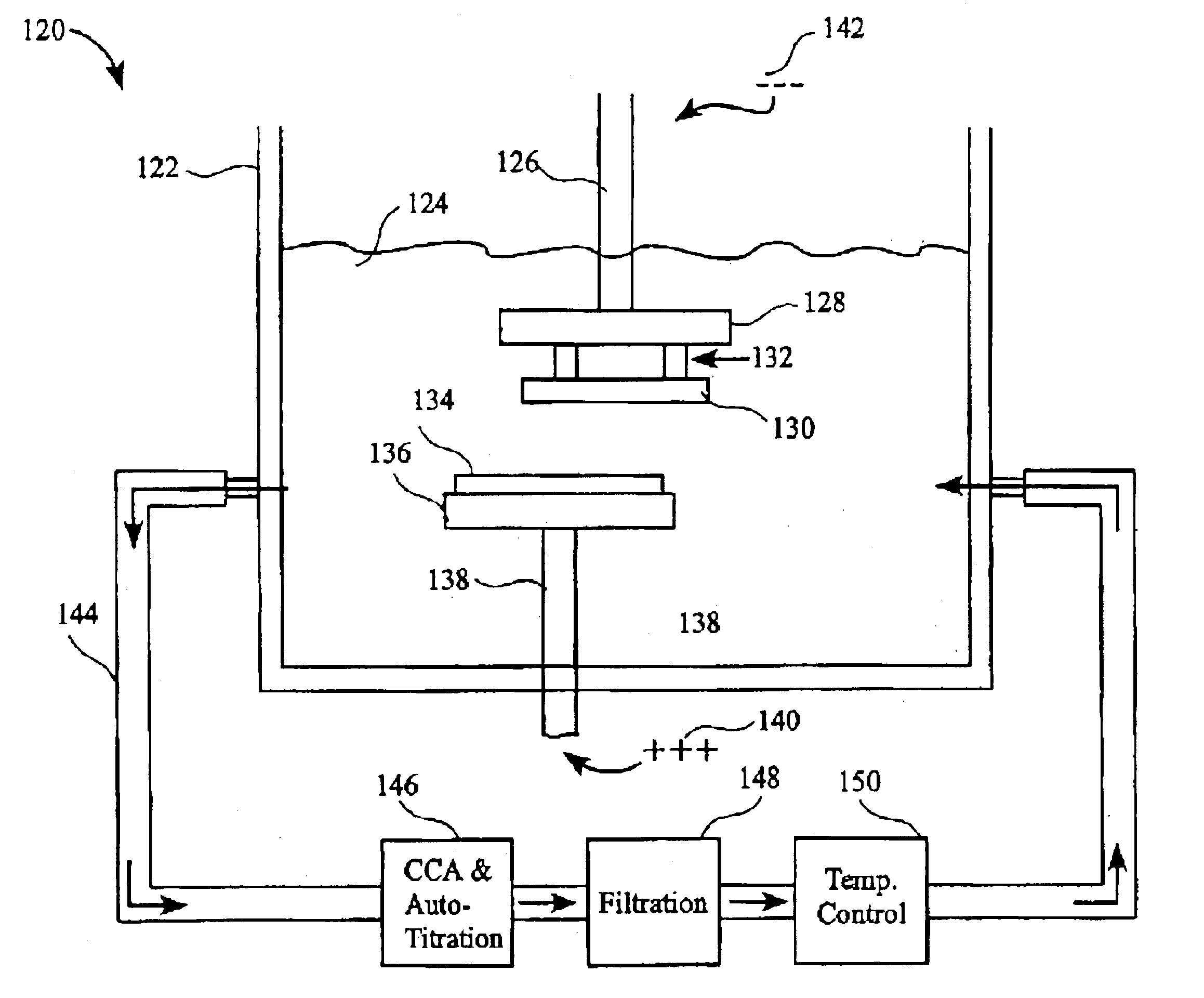Electrochemical assisted CMP
a technology of electrochemical assisted and substrate, which is applied in the direction of electrolysis components, manufacturing tools, lapping machines, etc., can solve the problems of reducing the feature size, reducing the service life of the substrate, so as to reduce the application force, reduce the stress, and reduce the effect of tearing and fractur
- Summary
- Abstract
- Description
- Claims
- Application Information
AI Technical Summary
Benefits of technology
Problems solved by technology
Method used
Image
Examples
Embodiment Construction
An invention for electrochemically assisted CMP for material removal and substrate planarization is disclosed. In preferred embodiments, electrochemical assisted CMP includes electrochemical formation of a weak passivation film on the surface of a substrate and material removal driven by mechanical contact with an engineered polishing substrate. In the following description, numerous specific details are set forth in order to provide a thorough understanding of the present invention. It will be understood, however, to one skilled in the art, that the present invention may be practiced without some or all of these specific details. In other instances, well known process operations have not been described in detail in order not to unnecessarily obscure the present invention.
As an overview, embodiments of the present invention provide for a combination of electrochemical dissolution with low stress mechanical abrasion. A process of electropolishing uses controlled, minimal electrochemi...
PUM
| Property | Measurement | Unit |
|---|---|---|
| surface roughness | aaaaa | aaaaa |
| surface roughness | aaaaa | aaaaa |
| surface roughness | aaaaa | aaaaa |
Abstract
Description
Claims
Application Information
 Login to View More
Login to View More - R&D
- Intellectual Property
- Life Sciences
- Materials
- Tech Scout
- Unparalleled Data Quality
- Higher Quality Content
- 60% Fewer Hallucinations
Browse by: Latest US Patents, China's latest patents, Technical Efficacy Thesaurus, Application Domain, Technology Topic, Popular Technical Reports.
© 2025 PatSnap. All rights reserved.Legal|Privacy policy|Modern Slavery Act Transparency Statement|Sitemap|About US| Contact US: help@patsnap.com



